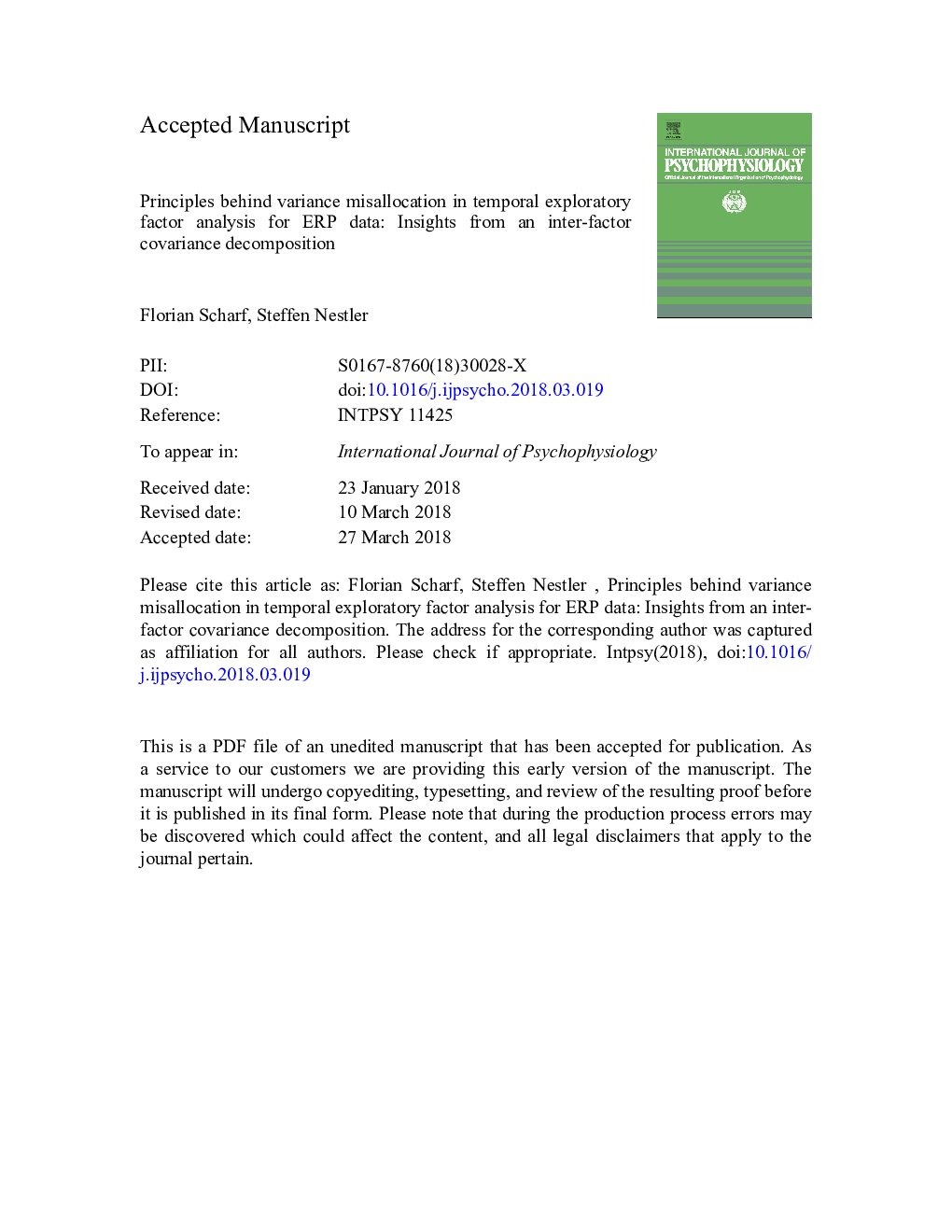| Article ID | Journal | Published Year | Pages | File Type |
|---|---|---|---|---|
| 7294827 | International Journal of Psychophysiology | 2018 | 52 Pages |
Abstract
Temporal exploratory factor analysis (EFA) is commonly applied to ERP data sets to reduce their dimensionality and the ambiguity with respect to the underlying components. However, the risk of variance misallocation (i.e., the incorrect allocation of condition effects) has raised concerns with regard to EFA usage. Here, we show that variance misallocation occurs because of biased factor covariance estimates and the temporal overlap between the underlying components. We also highlight the consequences of our findings for the analysis of ERP data with EFA. For example, a direct consequence of our expositions is that researchers should use oblique rather than orthogonal rotations, especially when the factors have a substantial topographic overlap. A Monte Carlo simulation confirms our results by showing, for instance, that characteristic biases occur only for orthogonal Varimax rotation but not for oblique rotation methods such as Geomin or Promax. We discuss the practical implications of our results and outline some questions for future research.
Related Topics
Life Sciences
Neuroscience
Behavioral Neuroscience
Authors
Florian Scharf, Steffen Nestler,
